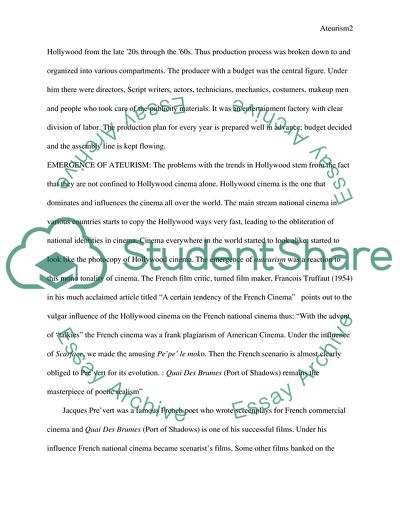Cite this document
(How Useful Is the Concept of the Auteur in the Context of Post-War Coursework, n.d.)
How Useful Is the Concept of the Auteur in the Context of Post-War Coursework. Retrieved from https://studentshare.org/visual-arts-film-studies/1563322-european-film-studies-how-useful-is-the-concept-of-the-auteur-in-the-context-of-post-war-european-cinema
How Useful Is the Concept of the Auteur in the Context of Post-War Coursework. Retrieved from https://studentshare.org/visual-arts-film-studies/1563322-european-film-studies-how-useful-is-the-concept-of-the-auteur-in-the-context-of-post-war-european-cinema
(How Useful Is the Concept of the Auteur in the Context of Post-War Coursework)
How Useful Is the Concept of the Auteur in the Context of Post-War Coursework. https://studentshare.org/visual-arts-film-studies/1563322-european-film-studies-how-useful-is-the-concept-of-the-auteur-in-the-context-of-post-war-european-cinema.
How Useful Is the Concept of the Auteur in the Context of Post-War Coursework. https://studentshare.org/visual-arts-film-studies/1563322-european-film-studies-how-useful-is-the-concept-of-the-auteur-in-the-context-of-post-war-european-cinema.
“How Useful Is the Concept of the Auteur in the Context of Post-War Coursework”. https://studentshare.org/visual-arts-film-studies/1563322-european-film-studies-how-useful-is-the-concept-of-the-auteur-in-the-context-of-post-war-european-cinema.


